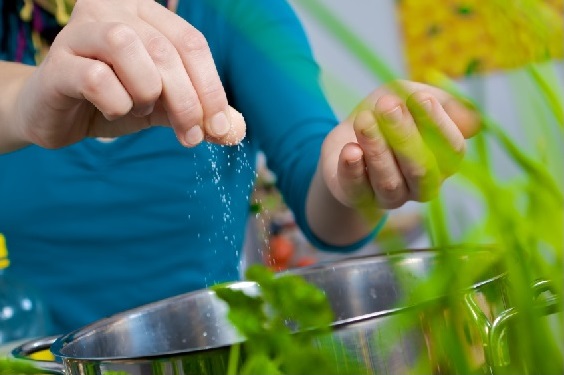
World-class chefs use MSG (monosodium glutamate) in their cooking, and perhaps you’re toying with the idea of giving it a try at home.
Why should you go for it? Quite simply, because seasoning many foods with MSG makes them taste better!
MSG is a purified form of glutamate, the amino acid responsible for umami (savory) flavor. By using it to increase the savoriness of a dish, the dish will taste richer and meatier. The savory flavor from MSG will also balance out other flavors like sweet and sour, and cancel out the bitter flavor found naturally in many vegetables. Another perk of MSG is that it can be used to lower the amount of sodium in a food (by up to 40%!) without making the food taste bland. So it’s understandable that some chefs consider not using MSG when cooking to be akin to not using salt.
Another perk of MSG is that it can be used to lower the amount of sodium in a food (by up to 40%!) without making the food taste bland.
Once you’ve decided to try MSG in your home cooking, you may be wondering where to start. First, look for MSG in the spice aisle or the Asian foods section of your local grocery store. It comes as a granulated white powder similar in appearance to salt, and may be found under the brand names of Ajinomoto® or Ac’cent®. Once you’re home and ready to try it out, know that MSG works best in meat, poultry, fish, seafood, vegetable, and egg dishes as well as soups and gravies, as these foods inherently have some umami flavor that MSG accentuates. Add the MSG before or during cooking at the same time you would add other seasonings like salt and pepper. About ½ teaspoon of MSG is enough to season a pound of meat or a dish that serves 4 to 6 people.
 As with all seasonings, personal preferences vary, so you may want to start with a smaller amount and adjust upwards to suit your taste until you’re used to cooking with it. This is particularly important as putting too much MSG in a dish will give it an off flavor. And, you’ll want to add less salt initially until you learn how using both seasonings together affects the overall flavor of a dish.
As with all seasonings, personal preferences vary, so you may want to start with a smaller amount and adjust upwards to suit your taste until you’re used to cooking with it. This is particularly important as putting too much MSG in a dish will give it an off flavor. And, you’ll want to add less salt initially until you learn how using both seasonings together affects the overall flavor of a dish.
It’s essential to note that MSG is not a magic wand. It will heighten the flavor of good food, but it can’t make bad food suddenly taste delicious. But, if you’re ready to banish the bland and elevate your cooking, give MSG a shot. It can be daunting to try a new ingredient, but if you start with small amounts using the tips listed above, you can’t go wrong.
* * *
 Read more: “8 Tips for Using MSG in Cooking and in Recipes”
Read more: “8 Tips for Using MSG in Cooking and in Recipes”
Tip #5: Approximately one-half teaspoon of MSG is an effective amount to enhance the flavor of a pound of meat or four-to-six servings of vegetables, casseroles or soup.

